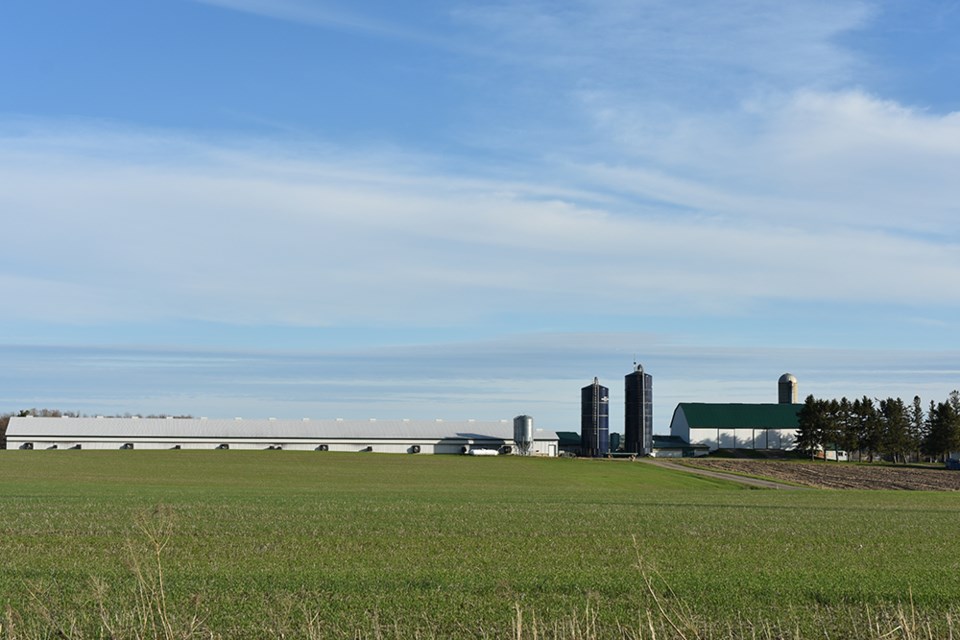York Region is planning to focus most of its development in its rural areas, including East Gwillimbury over the next 30 years, but environmental groups are questioning the approach.
Provincial growth plans are projecting York will add another 800,000 residents by 2051. It is up to York Region to plan how that growth will happen, with much of it currently centred away from Newmarket and into into rural farmland areas in places like East Gwillimbury, also known as the “white belt.” The region expects up to 80 per cent of those lands will be necessary to use to accommodate growth.
But environmental groups are expressing concern about the direction, and calling for the region to focus on intensification in areas like Newmarket. Land-use planner Susan Swail, who has worked with the advocacy group Environmental Defence, said people want to be in developed lands, not outlying ones.
“They want to be deep in downtown Newmarket, a nice mix of open space, build tall buildings, there’s some small buildings,” Swail said. “That’s kind of the model we need to build out more of.”
York Region is updating its municipal comprehensive review and figuring out its growth management plans, with an open house scheduled for July 27.
In a March report, the region forecasted about 50 per cent of regional growth would be through intensification in built-up areas such as Newmarket, while 49 per cent would be in designated greenfield areas and less than one per cent in rural areas.
Newmarket is projected to grow, but at a slower rate, from 90,000 to 110,000 in 2051. In contrast, East Gwillimbury is expected to balloon from approximately 31,000 people to be almost as large in Newmarket over the next 30 years.
York Region chief of planning Paul Freeman said the municipality is still consulting and the targets are not finalized. He said the intensification target could be changed — potentially meaning more development in built-up areas like Newmarket — and they intend to present options for that to the regional council in September. Regardless, he said some amount of growth into outlying areas is needed.
“There will be some urban expansion,” Freeman said.
Rescue Lake Simcoe Coalition executive director Claire Malcomson is opposed to that direction and is concerned by the environmental impact of the low-density development she feels it could bring. She said expanding the urban area farther out could make it difficult to service it with timely enough transit service.
“The conditions, and the targets that the province is setting for these regions to follow pretty much guarantees we are locking in a pattern of living, commuting, getting around that condemns us to a future of adding more and more greenhouse gases to the atmosphere,” she said.
Other organizations such as the York Federation of Agriculture have also expressed concern about the loss of farmland to growth plans.
The province has typically forecasted growth 20-years out, with the most recent 30-year projection a new precedent. Freeman said the province's projection is “aggressive,” but that York has typically had the highest share of growth in the Greater Golden Horseshoe Area.
“It’s hard to tell what will happen over a 30-year time period,” he said. “A lot of it has to do with having one subway, and potentially a second subway, that will come into York Region.”
The Ontario Headwaters Institute is pushing against the latest growth planning. Executive director Andrew McCammon said he is concerned by the lack of environmental consideration from the province in its growth. He said good municipal planners can try to account for environmental impacts, but the competing growth pressures can challenge that.
“It’s really a throwback to a bygone era, where growth is good, and don’t bother me with the environment. And in that, they’ve lowered the densities,” McCammon said.
Should targets change based on concerns, it could result in more intensification in built-up areas like Newmarket. Malcolmson said concerns about that growth could be addressed with good planning.
“Frankly, a lot of the not-in-my-backyard stuff can be remedied by some more creative and really solid planning, education, and outreach,” she said. "The development community has to have some answers on that."
York Region is hosting a growth management and housing information open house July 27. It will discuss the details on the preliminary growth strategy, an overview on housing, and offer an opportunity to provide feedback. The meeting will be done via zoom between 4 p.m. to 6 p.m. Information is available at york.ca/haveyoursay.
